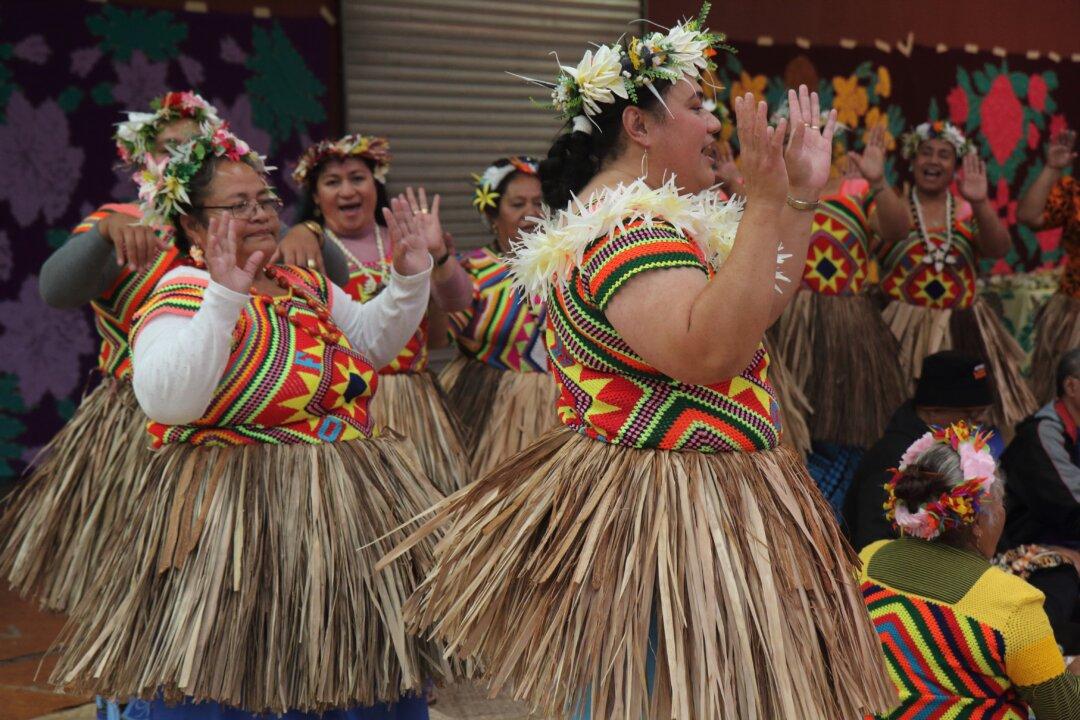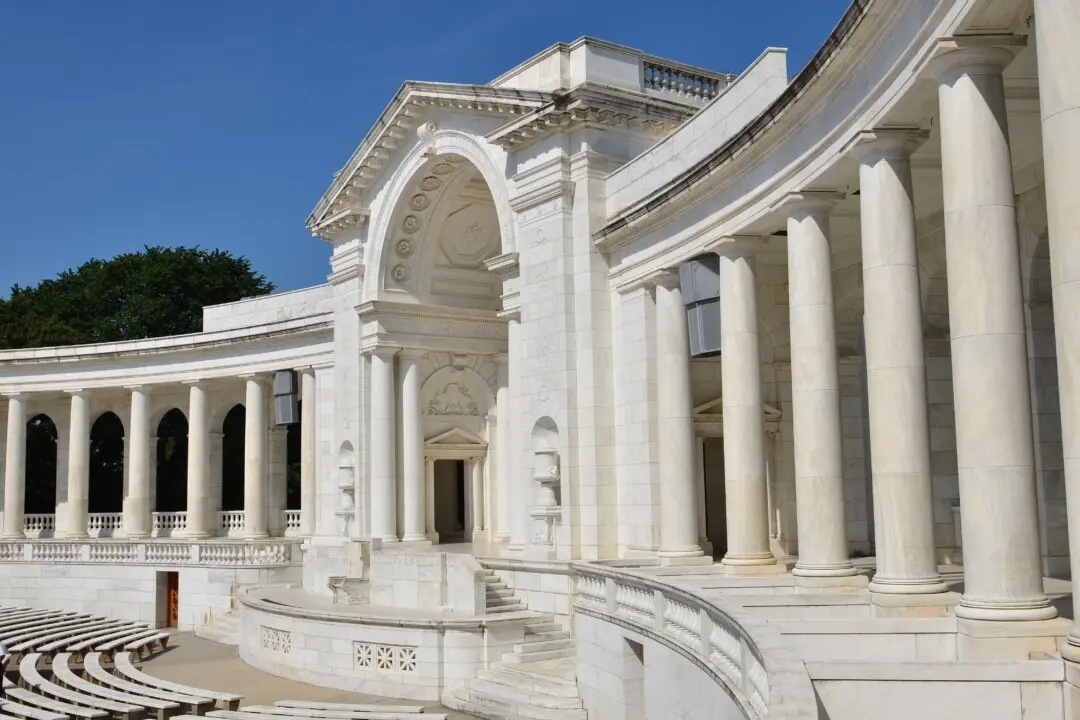AUCKLAND, New Zealand—It’s the closest I’ve come to a “Narnia” experience, where I’ve walked into something utterly unexpected. Here, the wardrobe in Narnia is replaced by a warehouse on the edge of the Corban Estate Art Center in Henderson, West Auckland, on New Zealand’s North Island.
At the warehouse entrance, I’m faced with what seems like an ocean of concrete. I follow the sound of singing in a language foreign to my own. As I cross the concrete, I am warmly greeted by a woman crowned with a garland of flowers and clothed from head to toe in color: the traditional dress of Tuvalu, a South Pacific island nation consisting of nine coral islands between Hawaii and Australia.
“You must be hungry. Come eat,” she gestures, as she welcomes me in.
Further into the warehouse, I can see the singing comes from where the Tuvaluan community members have gathered on an island of 50 mats. Each mat has been woven by a woman from the community for the occasion.






